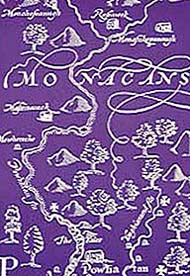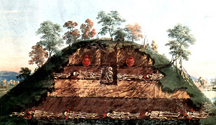Since this blog is focusing on historic periods (roughly post 1700), I won’t have the space to describe the indigenous populations in great detail. But I will occasionally discuss the historic records that document the presence of the Monacan people in the region (who arrived long before the European settlers). For example, Captain John Smith’s 1607 map of Virginia indicates a region inhabited by “Monacans.”

This map includes a reference to Monasukapanough, located along the Rivanna River near the present-day Polo Grounds Road. Over 150 years later, in 1788, Thomas Jefferson published his Notes on the State of Virginia. In it, on page 102, he refers to the Monacans, attempting to trace their linguistic heritage. His fascination with their language and material culture may have begun as a boy when he (unknowingly) played across the river from Monasukapanough at the home of his boyhood friend, Dabney Carr (today the location of the Carrsbrook subdivision off Route 29). A couple pages later, Jefferson describes his excavation of an Indian Burial mound which he calls a “barrow” which later earned him the sobriquet “father of American archaeology” (his digging techniques reveal a sophisticated understanding of archaeological stratigraphy, post-depositional forces, and faunal taphonomy). In addition, he recalls an event that he witnessed in the 1750s: “…a party passing…through the part of the country where this barrow is, went through the woods directly to it, without any instructions or enquiry, and having staid about it some time, with expressions which were construed to be those of sorrow, they returned to the high road, which they had left about half a dozen miles to pay this visit, and pursued their journey” (p. 106).

Jefferson’s observations represents a rare, first-hand, recorded account of Native American rituals in Albemarle County. To the right is a 19th Century representation of a Native American burial mound. For more information on the Monacan Village, visit, http://www.vcdh.virginia.edu/encounter/projects/monacans/Overview/index.html To read more about Jefferson’s observations of Native American features and customs go to: http://etext.virginia.edu/toc/modeng/public/JefVirg.html To learn more about the Monacans, visit their museum in Amherst or take a Virtual Trip.
